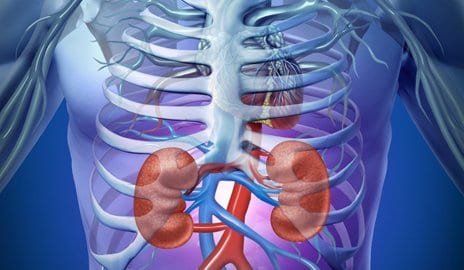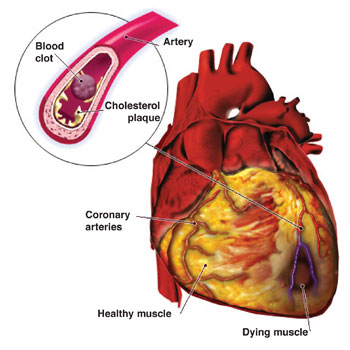When a doctor has a diabetic patient, he or she worries about the chances that that patient might develop microalbuminuria. Microalbuminuria is a type of kidney disease. The appearance of microalbuminuria indicates the occurrence in the kidneys of dangerous changes. Those changes lead to the development of proteinuria.
Kidney disease and diabetes. When a doctor has a diabetic patient, he or she worries about the chances that that patient might develop microalbuminuria. Microalbuminuria is a type of kidney disease. The appearance of microalbuminuria indicates the occurrence in the kidneys of dangerous changes. Those changes lead to the development of proteinuria.
Whenever a patient’s urine has an abnormally high amount of protein, that patient is said to have proteinuria. Proteinuria can be used to refer to large or small amounts of protein in the urine. The first signs of proteinuria manifest themselves when a diabetic patient has a low level of protein in his or her urine. Such a patient has microalbuminuria.
A physician can check for microalbuminuria by screening for the presence of albumin in a patient’s urine. That screening should conducted at least once a year. If done according to the traditional method, such a screening demands collection of urine for a period of 24 hours.
Diabetic patients should know that there is an alternative to the traditional screening method. That alternative employs spot testing of morning urine specimens. By using that alternative method, a laboratory can check the albumin to creatine ratio in the urine.
Diabetics should also understand the importance of watching for symptoms of proteinuria. Evidence of one or more symptoms should send the diabetic to the phone. The diabetic knows that he or she needs undergo a screening for albumin in the urine.
What are the symptoms of proteinuria? Foamy urine tells a diabetic that he or she has probably developed proteinuria. Foamy urine indicates damage to the glomeruli in the kidneys. A diabetic who sees that he or she has foamy urine should know that his or her urine puts out between 30 and 150 grams of protein every 24 hours. This is an abnormally high protein content for any 24 hour sampling of human urine.
Why does the presence of protein in the urine signal the occurrence of kidney damage? And why do patients with diabetes need to make an added effort to watch for evidence that such damage might have occurred?
A patient with diabetes needs to understand that 20% of the blood pumped by the heart goes to the kidneys. The kidneys perform a number of vital functions. The kidneys hold constant the concentration of ions in the bloodstream. They keep the volume of water in the blood constant. They remove wastes, and they insure maintenance of a proper acid/ base balance in the blood.
A well-functioning kidney can help to control the blood pressure in the body. A well-functioning kidney can hold steady the level of calcium in the body. In addition, the kidneys stimulate the production of red blood cells.
Each kidney has millions of tiny tubular structures called nephrons.. Each nephron is closed at one end. At that closed end, two twisted regions of the nephron have a hair pin loop between them.
Two capillary beds flow into and out of the twisted, closed region of the nephron. Those capillary beds form a connection much like the light bulbs in a series circuit. The capillaries in the nephron connect the arteries going into the kidney with the veins coming out of the kidney.
The construction of the vessels within the kidney allows completion of three different processes by an undamaged kidney. The kidney sends 20% of the plasma and non-cell elements in the blood into the nephron; there those elements pass through a filter. Diabetics should realize that there is glucose in the filtrate that emerges from that filter.
In a healthy kidney, the amount of any substance in the filtrate shows little fluctuation. The amount of any substance in the filtrate represents the product of the concentration of that substance in the blood and the rate of filtration in the kidney. Changes in the filtration rate, changes such as those that can take place in a diabetic patient, send a warning signal to the physician who had detected those changes.
After plasma from the blood has been filtered by the kidney, then the kidney starts to reabsorb from the lumen any components that must be returned to the blood. The kidney relies on proteins called transporters to carry out this re-absorption process. The set of transporters that grab the glucose molecules and return them to the blood also grab sodium molecules.
Diabetics must realize that the number of transporters in the kidney remains fixed. The body can not make extra glucose transporters, when blood full of glucose passes through the kidney. Among that fixed amount of transporters, each transporter can grab only a pre-determined number of molecules during any specific period of time.
As can be seen from the above paragraphs, the kidney’s ability to function properly can be hampered by the appearance of blood that contains a high concentration of glucose. The presence of that glucose forces the kidney to work harder and harder. Eventually, it fails to function as nature intended.
The kidney has one other function that insures removal of unwanted substances from the blood. The kidney can detect the presence of waste products and toxic materials in the blood stream. The kidney secretes those substances into the nephron. Those substances then pass into the urine.
The kidney of a diabetic notes the excess glucose in the bloodstream. The kidney interprets the flood of glucose as a sign that the body does not need that glucose. The kidney of a diabetic secretes the excess glucose into the nephron, thus sending it into the urine
If a diabetic has too much urine in his or her urine, that diabetic could develop an infected bladder. Bacteria love to grow in a warm environment, especially an environment with a rich source of nutrients. The warm, glucose-laden bladder of a diabetic can easily become an inviting home for bacteria.
In other words, patients who have diabetes need to be concerned more than just a possible kidney disease. They must also watch for signs that they might have an infected bladder.
 Chef Brings Personal Experience to Diabetic
Chef Brings Personal Experience to Diabetic 

